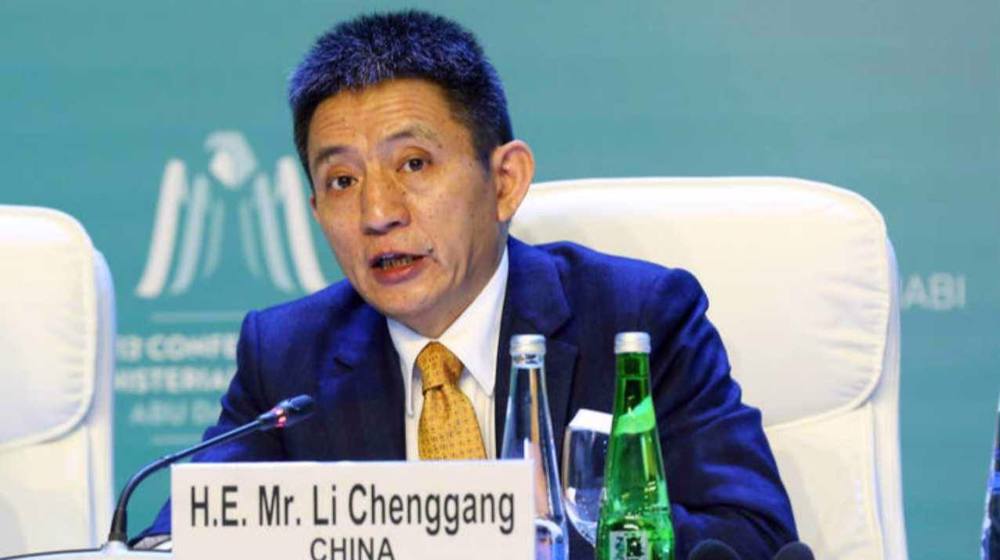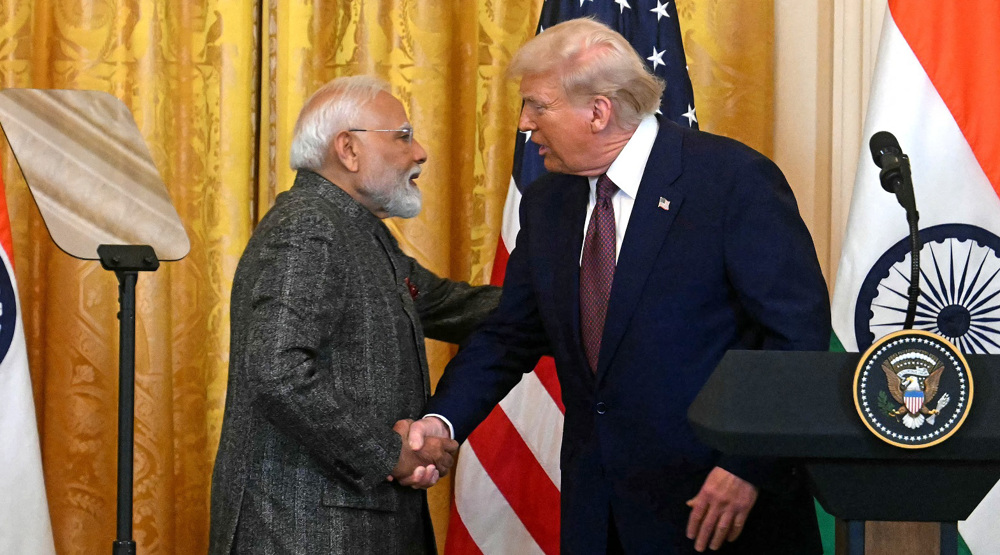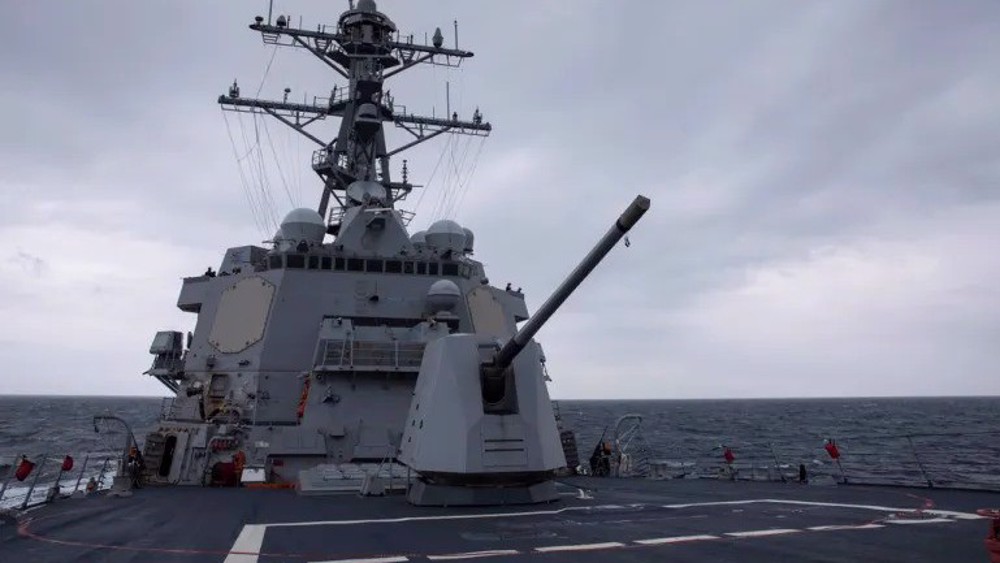Chinese battle group conducts live-fire drills
A Chinese naval battle group, involving a homemade aircraft carrier, has conducted a live-fire drill in northeastern waters in a show of force amid an escalating war of words with the United States.
The Chinese Defense Ministry announced on Thursday that dozens of ships and aircraft had taken part in the exercise “a few days ago” in the Bohai Sea in eastern China.
It was the first time aircraft carrier Liaoning was participating in a live-fire drill. The ships and aircraft engaged in air-to-air, air-to-sea, and sea-to-air combat drills that featured guided missiles being tested.
The ministry said the objective of the exercises was to test weapon performance and train personnel with reconnaissance and early-warning systems in air interception, sea assault, air-defense, and anti-missile maneuvers.
It posted photos of Chinese-developed J-15 fighters on the deck of the Liaoning. The aircraft carried live ammunition and performed strike exercises, it said.
The drills were held amid heightening tensions between the US and China over Washington’s military presence in contested waters near China and a drama involving US President-elect Donald Trump’s controversial stance on Taiwan.
Washington has taken sides in regional territorial disputes with China’s rival claimants. China says Washington is deliberately escalating the situation in the territory and US patrols in the contested waters are “illegal” and “provocative.”
The Chinese Defense Ministry has urged the US to respect China’s national sovereignty in the contested waters.
China has also recently been engaged in a war of words with Trump’s administration-in-waiting. Trump recently took a phone call from Taiwanese President Tsai Ing-wen, angering China, which regards self-ruled Taiwan as part of its territory.
Trump later said he did not feel bound by decades of US diplomatic protocol recognizing such sovereignty unless China made certain economic and political concessions to Washington.
The remarks have set off a string of stern reactions from Chinese authorities, who have said Sino-US relations would be at stake if Washington dropped the so-called One China policy of recognizing Chinese sovereignty over Taiwan.
China has also warned Taiwan against feeling emboldened by Trump’s behavior.
Since Trump’s phone conversation with Tsai, China has sent military aircraft close to Japanese territory near the Miyako Strait and reportedly sent a bomber to circumnavigate disputed territory in the resource-rich South China Sea, flights its air force has described as “routine.”
The US Pacific commander threatened on Wednesday that it would continue to challenge China’s “assertive, aggressive behavior in the South China Sea,” which is one area of territorial disputes between China and several regional countries.

Meanwhile, China has reacted to statements by a US think tank that said on Wednesday that China had been installing anti-aircraft and anti-missile systems on artificial islands in the South China Sea.
China’s Defense Ministry said on a verified social media account that the islands were mostly for civilian use, and that necessary military installations there were for self-defense.
The Chinese military has said it will increase its air and maritime patrols in the territory in accordance with its defensive needs.
China claims sovereignty over most of the sea, which is a key shipping lane, serves as a crossing for more than 5 trillion dollars in maritime trade, and has rich fishing grounds and a potential wealth of mineral resources.
Shocking details of Israeli army’s massacre of 90 civilians from Juha family in Gaza
VIDEO | Lebanese resistance remains alive
Iran’s daily sweet gas production peaks at 870 mcm: NIGC
Nasrallah shattered myth of Israeli military’s invincibility: Top Yemeni official
Iran says it has attracted $8.2bn of foreign investment since Aug
‘Misguided policies’: Araghchi says unjust sanctions inflict suffering on innocent Iranians
Iran summons Polish envoy over 'baseless, biased' drone claims
Election winner conservative Merz invites Netanyahu to Germany despite ICC warrant












 This makes it easy to access the Press TV website
This makes it easy to access the Press TV website